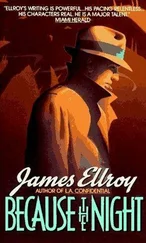Here are some choice tidbits of information to support that thesis:
In serial killings where robbery was (in forensic psych parlance) the “motive of the moment,” the 1981 average take was less than twenty dollars per victim.
A man convicted of nine murders, perpetrated in three states over a five-year period, was a conscientious objector during the Vietnam War and went to jail for holding draft-resistance seminars in violation of federal law. In light of that, he was asked how he could murder nine people in cold blood “I adapted my philosophy to accommodate my desire to kill,” he said.
A man caught in the act of raping an elderly woman he had murdered a few moments before was revealed to have been a released suspect in several other killings. The man passed polygraph testing before he was let go. When asked how he accomplished it, he said, “Listen, I groove on killing. I feel no guilt over it, so how can a machine programmed to detect guilt snitch me off?”
None of the six serial murderers of children successfully prosecuted in the United States during the year 1981 had been molested when they were children.
Serial killers are more often than not capable of sustaining normal, monogamous sexual relationships.
A final shocker supplied by Doc Seidman, the head shrink with the Task Force: Hardcore sociopathic career criminals with records of violence that stop short of murder outscore convicted serial killers on psychological tests aimed at detecting lack of moral restraint and criminal lack of conscience. Doc Seidman says that where your typical sociopath will steal you blind and exploit you in all matters from the most picayune on up — pathologically compelled to act with absolute selfishness — serial killers will not. They are, he says, sometimes capable of genuine love and passion. That “fact” heartened me, and it felt like it might be both a good hunting tool and a buffer against depression. Reading reports of sodomy, dismembering and murder, murder, murder can creep up on you. Passion is logical sometimes; I can almost logically harpoon why I love Carol so much, despite the fact a lot of people consider her a bitch. Then I blew it seeking more logical reinforcement. “How are they capable, Doc?”
“They have an exalted sense of style,” he answered.
So I’m back with good vs evil, the elation of the hunt vs the depression of the territory, cause and effect and Doc’s passion and style. It’s getting late, Carol should be back soon, and I want to be able to talk about her stuff, so I’ll put down the connecting links I credit so far, along with some pure cop observations:
1. — Two different sets of rape-dismemberments. The first set (three teenaged girls, all brunette) occurred in Southern Wisconsin in late ’78-early ’79, and may be attributed to a Chicago man, Saul Malvin, who committed suicide directly after and near the scene of the third killing. Malvin had O+ blood, like the killer (semen-typed from his victims), but there is no other physical evidence linking him to the Killings. Circumstantially, he fits: he was near the scene of the third killing, and he was allegedly at home alone during the time spread on the first two. Malvin had no criminal record and no history of psychiatric counseling, which is a moot factor as far as serials go. The shrinks on the Force say suicide after a particularly brutal killing is not unusual — it results from moments of clarity. (Nice they can feel it, but too bad it’s too late to do their last victim any good.)
2. — Four teenaged-early 20’s girls, raped and similarly dismembered, D.O.D.’s 4/18/79, Louisville, Kentucky; 10/1/79, Des Moines, Iowa; 5/27/80, Charleston, South Carolina; 5/19/81, Baltimore, Maryland. All four girls were blondes, all were hookers with multiple prostitution convictions. The killer/rapist was again an O+ secretor (very common type), and the physical evidence (knife marks and hacksaw-blade dimensions) was identical in all four cases. Interdepartmental notations included in the four case files and the master case file the four P.D.’s worked up when they formed their own short-lived “Task Force” speculate on either a legitimate policeman killer or a cop impersonator. So far that’s just theory, based on the observation of an old wino who said that he saw a man with a “cop vibe” enter the vestibule of the Charleston victim’s apartment budding on the night of her death. Iffy stuff. Right now I want to see if Malvin can be made or dismissed as the Wisconsin killer, and if dismissed, I want to check the physical evidence from the Wisconsin jobs against the other four. I requested the files from the Wisconsin State Police two weeks ago, no reply as yet. The blonde-brunette point is interesting. S.K.’s are tricky, and if one perpetrator is responsible for all seven deaths, maybe he just got the urge to change his “style.”
3. — Jim Schwartzwalder has five linkups of missing children, all in western, southwestern and southern states. Some of the links cross, and he’s having trouble determining how many perpetrators he’s dealing with. But... he’s got a vehicle description on one of his links, and so now he’s got the real shitwork that solves cases on his hands — crosschecking automobile registration against opportunity and the registerees’ criminal and/or psychiatric records. Thanks for taking the kids, Jim. I owe you one.
4. — I’ve got several transient killing links going back nine years. Different M.O.’s, but they run west to east chronologically, and I’ve connected two of them. Backtracking: thirteen roadside disappearance/killings in Nevada and Utah, spanning late 1974 to late 1975. Some were shot, some were bludgeoned; most of the bodies found had been robbed of valuables. The first two in the chain, a young man and woman discovered by campers in rural Nevada in December of ’74, had been shot with a .357 Magnum and arranged nude in a sexual posture. Following that, four affluent young hitchhikers, all male, were found variously beaten, shot (no expended rounds uncovered) and strangled in Nevada and Utah in January of 1975. All were robbed, and credit cards belonging to one victim were uncovered in Salt Lake City. The suspect harboring them, who was cleared as a suspect, said that the cards were sold to him by a tall, nondescript man in his early twenties named “Shifter.”
Jump to: five people, male and female, ages ranging from 14 to 71, disappeared from Utah and Nevada roadways in the spring of 1975. No leads — vanished.
Jump to: Ogden, Utah, 10/30/75: two solid-citizen motorists are last seen talking to a “tall young white man” outside Ogden, then — poof! — vanish.
That’s thirteen dead and presumed dead so far. Now, big jump, geographically and life-style-wise: eight young people disappear from Aspen, Colorado, during the months of January to June 1976. Four are husband-and-wife couples, all are affluent. The disappearances are never really connected, even when three of the missing people turn up in the snow, preserved, during the spring ’76 thaw — mutilated, the husband and wife arranged nude in an intercourse posture, a third missing man (last seen eight days after the first two!) positioned nude a few feet from them.
Add eight to thirteen, you get twenty-one. Now, another big jump. The letters “S.S.” are carved on the victims’ legs. At first the local police think it’s Nazi stuff, then some comic-book freak says it may be a reference to the “Shroud Shifter,” a comic-book bad guy from years ago. Connection: “Shifter” the credit-card pusher; “Shroud Shifter” the inspiration for the S.S. markings? I’ve run both names nationwide, and am awaiting results from municipal P.D. monicker files. Very, very tenuous stuff, but something to work on,
Jump to: nine Caucasian college students go poof! and disappear from various parts of Kansas and Missouri — April ’77 to October ’78. One young man was last seen talking to a “large white man, possibly the owner of a van,” and his credit cards were recovered from a card-frauder in St, Louis. The frauder stated in a polygraph exam: “The guy I bought them from said he got them from another guy with a weird name like Stick Shifter.”
Читать дальше












